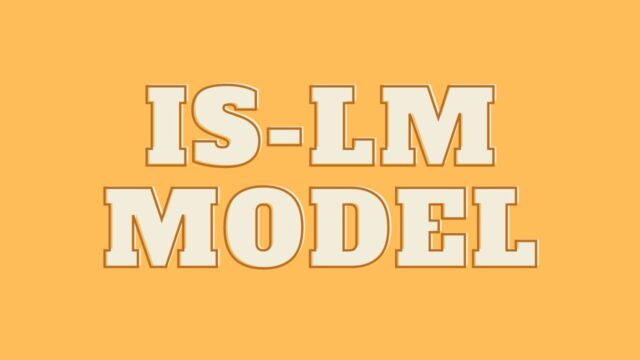
The IS-LM model, also known as the Hicks-Hansen model, is a macroeconomic framework that represents the relationship between the goods market and the financial market in an economy. It is based on the idea that the level of national income, employment, and output in an economy is determined by the intersection of the investment-saving (IS) curve and the liquidity preference-money supply (LM) curve.
The goods market and the financial market
- The goods market represents the demand for and supply of goods and services in an economy. It is influenced by factors such as consumer spending, investment, and government expenditure.
- The financial market represents the demand for and supply of financial assets, such as money, bonds, and stocks. It is influenced by factors such as the interest rate, the level of liquidity, and the level of risk aversion in the economy.
The IS curve
- The IS curve represents the relationship between the interest rate and the level of national income (also known as output or Gross Domestic Product).
- The IS curve slopes downward because a lower interest rate stimulates investment, which leads to higher national income.
- The IS curve can shift to the right or to the left based on changes in factors such as government expenditure, taxes, and the level of foreign trade.
The LM curve
- The LM curve represents the relationship between the interest rate and the level of liquidity in the economy.
- The LM curve slopes upward because a higher interest rate reduces the demand for money and increases the supply of loanable funds, leading to a higher level of liquidity.
- The LM curve can shift to the right or to the left based on changes in the money supply, the level of wealth, and the level of risk aversion in the economy.
The intersection of the IS and LM curves
- The intersection of the IS and LM curves represents the equilibrium point in the goods market and the financial market.
- At this point, the demand for goods and services is equal to the supply of goods and services, and the demand for financial assets is equal to the supply of financial assets.
- The equilibrium interest rate and the equilibrium level of national income are determined by the intersection of the IS and LM curves.
Policy implications of the IS-LM model
- The IS-LM model can be used to analyze the effects of monetary and fiscal policy on the level of national income and the interest rate.
- For example, an expansionary monetary policy (such as an increase in the money supply) shifts the LM curve to the right, leading to a lower interest rate and higher national income. An expansionary fiscal policy (such as an increase in government expenditure) shifts the IS curve to the right, also leading to a lower interest rate and higher national income.
Overall, the IS-LM model is a useful tool for understanding the relationship between the goods market and the financial market in an economy and for analyzing the effects of monetary and fiscal policy on national income and the interest rate.
It is important to note, however, that the IS-LM model is a simplified representation of the economy and does not capture all the complexity and dynamics of real-world economic systems.


































